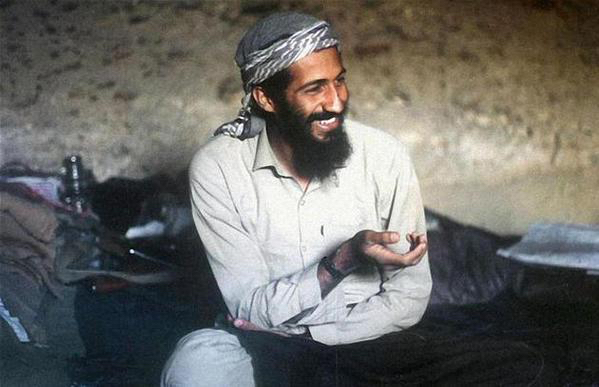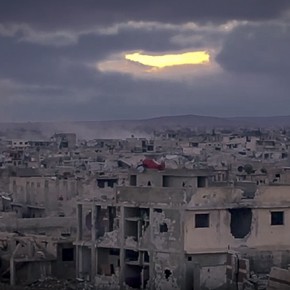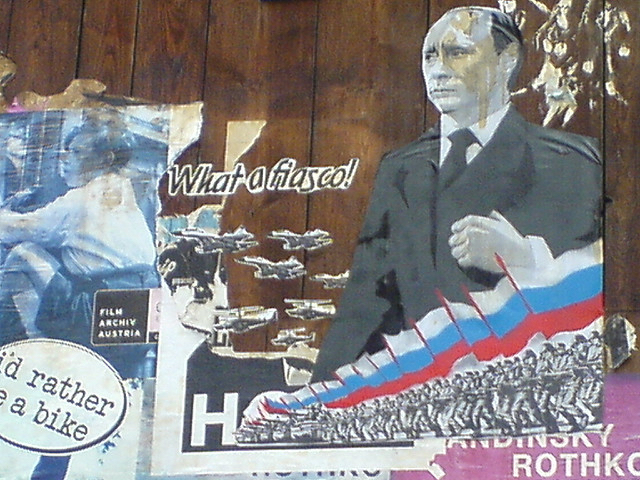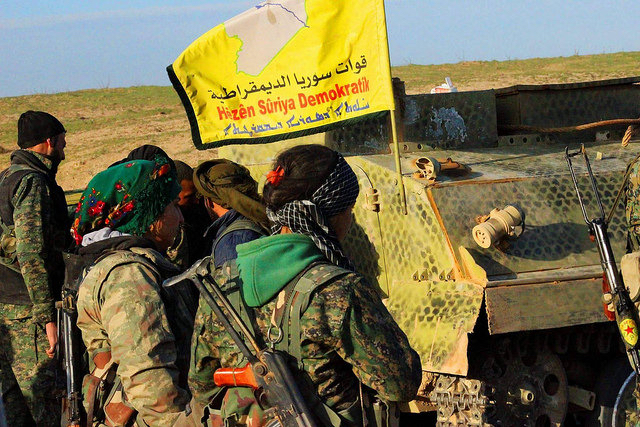Seymour Hersh occupies a peculiar place in the American media landscape. As the guy who broke the story of the massacre at My Lai in 1969, and having been instrumental in exposing the abuse of prisoners at Abu Ghraib in 2004, Hersh is second only to Woodward and Bernstein in the firmament of investigative journalism. Unlike the latter pair, who translated their fame from breaking the backstory of the Watergate break in into decades-long careers of non-threatening mediocrity, Hersh has continued to stir the pot.
And thus Hersh’s work, which has continued to explore the darker corners of covert action, tends to evince a sort petulant bitterness along (along with obligatory expressions of respect) from the mainstream journalistic community.
This is clearly evident in the responses to his recent journalistic exploits, posing an alternate account of the killing of Osama bin Laden, and raising troubling questions about the actual source of the nerve gas attack on Ghouta, east of Damascus. Hersh’s recent reportage on these topics has been republished in book form by Verso and, although the title is somewhat misleading (The Killing of Osama bin Laden for a book in which three of the four pieces included deal with a different topic), the substance of this publication is invaluable.
The first piece in the collection, originally published in the London Review of Books late last year, advances an alternative theory of bin Laden’s killing. According to Hersh, the Abbottabad compound was less in the nature of a hideout and more of a place of confinement for a figure whose significance had shrunk from that of international terrorist mastermind to a mere pawn to be used by the ISI in its attempts to deal with the Taliban. His presence was discovered by the United States, effected not by the dogged pursuit of his courier (and the judicious use of “enhanced interrogation”) but by the defection of an upper-middle level ISI officer, the question was not if bin Laden would be killed, but under what circumstances (and with what explanation).
A complex plan was hatched between the CIA and the ISI to kill bin Laden make it appear that he had been killed by a drone strike in Afghanistan. This would have served a number of purposes, both for the Obama administration (always hungry for a big win on the terrorism from to silence its many critics) as well as for the ISI, which could improve its relationship with Washington. And it all might have worked, had it not been for the fact that one of the Blackhawk helicopters ferrying in the Navy SEAL wet team crashed inside of the walls of bin Laden’s compound in Abbottabad, knocking matters into a cocked hat.
The operation was predicated on secrecy, and on the premise that bin Laden’s death wouldn’t become common knowledge for several days, giving the opportunity for the construction of an elaborate cover story. But the wreckage of the chopper in Abbottabad, and the Obama administration’s hunger for positive news in the war on terror, led to a progressive rejigging of the story. According to Hersh’s sources, unnamed retired intelligence officials, the Obama administration chose to ignore the wishes of its own covert operations arm, as well as to burn the ISI generals who had collaborated in the plot, and to trumpet the death of the only man less popular than Hitler in the American psyche.
In similar fashion, with a similar paucity of sources, and with a similar whistleblowing zeal, the balance of the book is filled out with pieces the Hersh published in the London Review of Books in which he alleges that the sarin attack on Ghouta was the work not of the Assad regime, but of the Islamist Jabhat al-Nusra, with which the US government shares a common goal, if not exactly a common worldview.

For Hersh, the false flag attack on Ghouta reflects a larger foreign policy deficiency of the Obama administration. Rather than collaborating with Russia and China to fend off a murderous and merciless enemy (i.e. radical Islamism in the particular personification of ISIS), Obama’s government is pursuing an outdated Cold War agenda in which Moscow (and/or Beijing) is seen as the real enemy.
It is hard to draw any solid conclusion about the veracity of Hersh’s charges, although this has not stopped security wonks in the mainstream media from deeming them obviously false. The reliance on unnamed sources is constantly harped on as a major weakness in the story, although, as Trevor Timm argued in the Columbia Journalism Review , “using anonymous sources is a tried-and-true Washington ritual that receives almost no criticism in day-to-day reporting.” Timm, whose robust defense of Hersh skews slightly too far in the opposite direction, does point to the fact that the New York Times published numerous stories using anonymous sources around the time of the publication of Hersh’s piece on bin Laden, and that these raised nary a peep from those concerned with sound journalistic practice.
Writing in the Guardian, Andrew Anthony argues (echoing a number of other journalists and security experts) that, “for Hersh to be right it would mean that a very large number of people had agreed on a very detailed lie and stuck to it over several years in countless interviews.” But how implausible is this really? This is not like the natterings of 9/11 revisionists, who insist that an operation involving (minimally) hundreds of people and thousands of American deaths is being covered up by the government. Rather, this is a case of a rather smaller number of people, all of whom have already signed non-disclosure agreements anyway, creating a story about the killing of one person that every red-blooded American hates anyway.
It’s by no means clear that any great deal of useful intel was seized at the compound. Nor is it easy to explain how bin Laden could have maintained any meaningful operational control over al Qaeda from a compound with electronic communication connections to the outside. This, again, calls for a certain amount speculation from readers, and the standards of what is credible are far from unequivocal. What Hersh clearly does get right (because at this point it is a matter of public record) is that, as the authors of The Senate Intelligence Committee Report on Torture noted, “the CIA’s justification for the use of its enhanced interrogation techniques rested on inaccurate claims of their effectiveness.” The story of heroic operatives tracking down bin Laden’s courier with guts and tradecraft is hardly less dubious.

The case is essentially the same in Hersh’s account of the Ghouta attack. There is a sense in which the attack itself becomes a sort of secondary factor in an argument about the proper orientation of US policy (and the selection of appropriate bedfellows) in the region. Much of the factual element of Hersh’s account depends on whether it is actually the case that the residual traces of the gas found at the scene do or do not match up (in ways that are opaque to the non-specialist) with batches of sarin known to be in the hands of the Assad regime, and whether Jabhat al-Nusra could have had the expertise and organizational capacity to handle a substance that is both extremely toxic, and so caustic that shells containing it have a shelf life of only days.
Once again, it’s not as if Hersh’s critics don’t have a point in terms of the lack of non-anonymous corroboration. But, at the same time, it is a little puzzling why Bashar al-Assad would engage in a kind of conduct so likely to prompt foreign intervention, particularly given that he was (and is) winning. In any case, if Hersh had what he believed to be a valid source for this information he was justified in, and perhaps obligated to, pass the information on to the general public. If Hersh has an agenda regarding the direction of broader elements of US policy in the region, that doesn’t in and of itself distinguish him from the run of wonks and newsmen also working on that topic.
These are, I think it fair to say, items worthy of republication. Given the source of source material on which Hersh’s claims are based one must necessarily regard them as matters of surmise rather than of fact. But, by the same token, the forces arrayed against Hersh, from Vox, to Politico, the Guardian, the conservative foreign policy press, and many others, have not made the case for their falsity with anything like the certainty that they like to claim. Hersh’s stories, intriguing as they are, are only free floating information in the public sphere of the West (and elsewhere), the factual content of which confirmed or denied by facts yet unearthed.
Photographs courtesy of RV1864, Gerry Dincher, and Gilbert Mercier. Published under a Creative Commons license.





